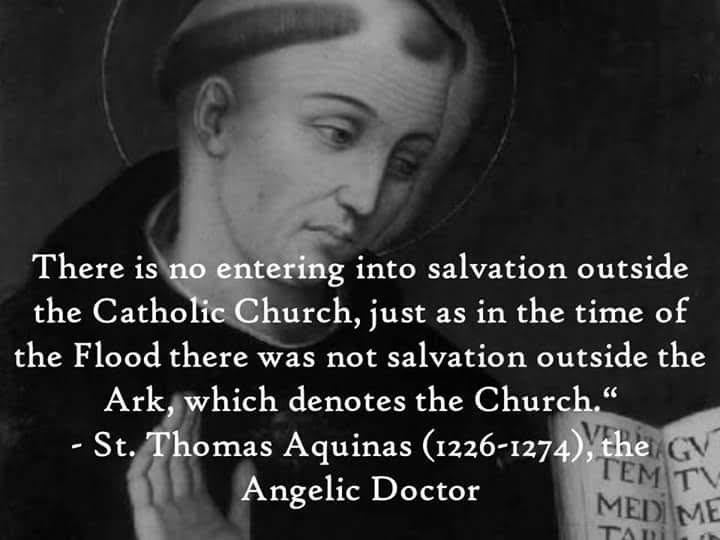Like Vatican Council II, the Letter of the Holy Office 1949 to the Archbishop of Boston can be interpreted with the for and against EENS method or the for and neutral to EENS method , with the Ladaria Error or without it, with the false premise or without it.The conclusion would be different.








So when the baptism of desire(BOD), baptism of blood(BOB) and being saved in invincible ignorance(I.I) is mentioned in the Letter(1949) there are two ways to interpret it.1) We can assume that they refer to hypothetical cases known only to God or 2) we can infer, as is commonly done, that it refers to known people saved outside the Church, saved without the baptism of water in the Catholic Church.Or we can assume that we humans can know of people who will be saved outside the Church, without Catholic faith and the baptism of water.
We can assume that they refer to invisible people in 2018 and this would be the obvious choice or we can wrongly assume that they refer to visible people in 2018. Either way our conclusion would be different since the premise is different.




The Holy Office 1949 during the pontificate of Pope Pius XII chose the irrational option. It assumed that BOD, BOB and I.I referred to known people saved outside the Church, in other words, there were personally known people saved in 1949 without the baptism of water.So BOD, BOB and I.I became an exception to Feeneyite EENS.


Similarly at Vatican Council II , Lumen Gentium 16( invincible ignorance), Lumen Gentium 14( case of the catechumen) etc is read by the Magisterium today as exceptions to traditional, Feeneyite EENS.

So on March 1,2018 Cardinal Luiz Ladaria at the Press Conference on Placuit Deo in answer to a question, said Lumen Gentium 8 was an exception to the old exclusivist understanding of salvation.
So on March 1,2018 Cardinal Luiz Ladaria at the Press Conference on Placuit Deo in answer to a question, said Lumen Gentium 8 was an exception to the old exclusivist understanding of salvation.
This indicates that he interprets the Letter of the Holy Office 1949 and Vatican Council II with the for and against EENS method, with the false premise and with the Ladaria Error.












So the Letter of the Holy Office 1949 heretically said that it was not necessary that everyone be a member of the Catholic Church for salvation, while the dogma EENS defined by three Church Councils says, it is necessary.


The Letter of the Holy Office was an innovation in the Church with a new theology(outside the Church there is salvation) based on an irrational philosophical premise(invisible people are visible in the present times).It was accepted by the Magisteriium of the Church.-Lionel Andrades




















No comments:
Post a Comment